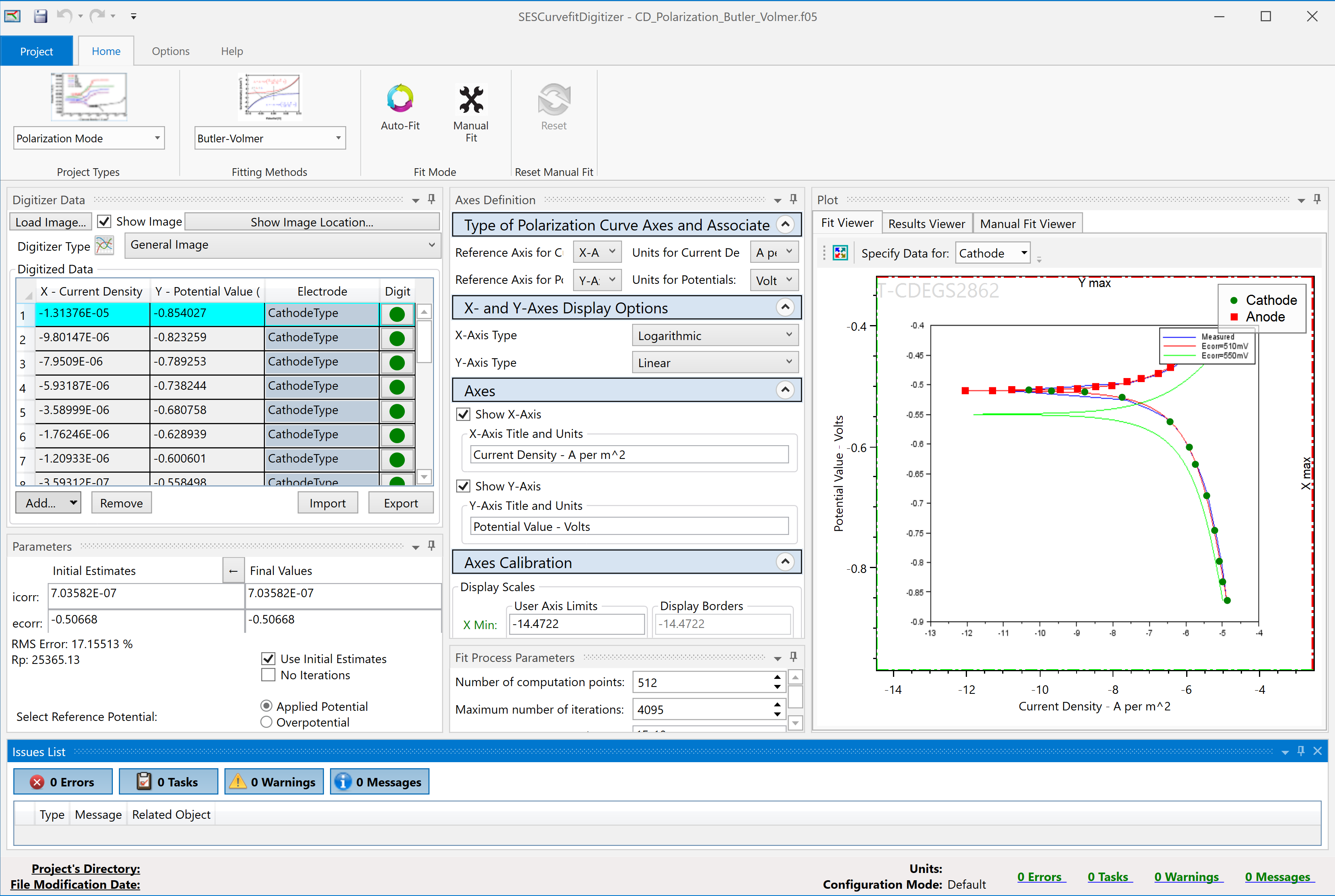SESCurvefitDigitizer
Curve Digitizing & Fitting Application
SESCurvefitDigitizer offers full digitizer functionalities and general scientific curve-fitting capabilities. It introduces new features and enhancements, while eliminating several limitations and restrictions of its predecessor, SESCurveFit. One of the most important applications of SESCurvefitDigitizer is its use in conjunction with the CorrCAD software package to obtain a polarization curve model from experimental corrosion polarization data.
Technical Description
SESCurvefitDigitizer employs state-of-the-art engineering optimization methods to obtain digitizing data and curve-fitting parameters for a curve from experimental data. For example, a corrosion polarization curve is digitized and fitted by a selected method such as the Bulter-Volmer equation. The polarization curve can then be used within the CorrCAD software package for the characterization of electrochemical corrosion processes in buried and immersed metallic conductor networks, so as to protect metallic utilities such as gas pipeline, offshore oil platform structures and electrical utility assets from being jeopardized by corrosion.
SESCurvefitDigitizer can also be used as a general curve fitting application in order to build mathematical models from experimental data.
Technical Highlights
SESCurvefitDigitizer consists of two integrated software tools. A digitizer and a specialized curve fitting utility. SESCurvefitDigitizer:
- Can directly import the numerical values of your experimental polarization data.
- Can extract polarization data samples from images containing graphs of polarization data or polarization curves using SESCurvefitDigitizer’s built-in Digitization and Fitting tools.
- In addition to the several built-in full polarization and scientific fitting methods that were included with SESCurveFit, SESCurvefitDigitizer includes the most general polarization mode, i.e., the Butler-Volmer with anode and cathode concentration dependencies, which covers special and more complex polarization modes.
In summary, SESCurvefitDigitizer has five curve fitting options available:
- The nonlinear Butler-Volmer Activation Polarization Model, which employs nonlinear least-squares to determine the four parameters that control the model, namely the corrosion current density, the equilibrium potential, the anodic Tafel slope and the cathodic Tafel slope.
- The nonlinear Butler-Volmer Concentration Polarization Model, which employs nonlinear least-squares to determine the five parameters that control the model, namely the corrosion current density, the equilibrium potential, the anodic Tafel slope, the cathodic Tafel slope, and the limiting current density.
- The Polynomial Polarization Model, which uses linear least-squares to determine the coefficients of the polynomial model.
- The Look-up Table Polarization Model that uses linear interpolation to determine the value of the polarization between two consecutive polarization data samples.
- The nonlinear Butler-Volmer with Anode and Cathode Concentration Polarization Model, which employs nonlinear least-squares to determine the six parameters that control the model, namely the corrosion current density, the equilibrium potential, the anodic Tafel slope, the cathodic Tafel slope, and both the anode and cathode limiting current densities.


